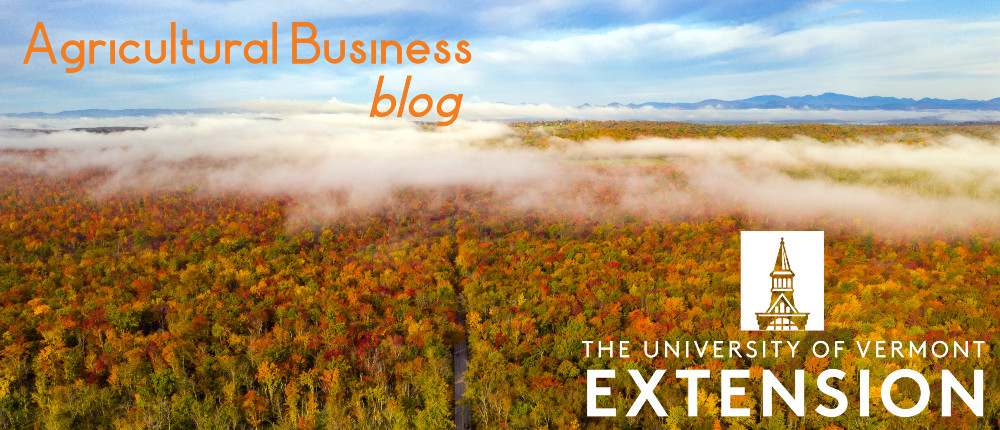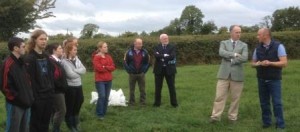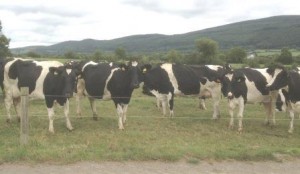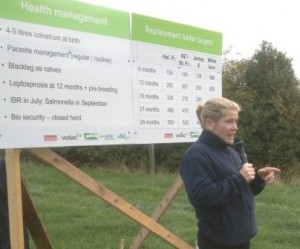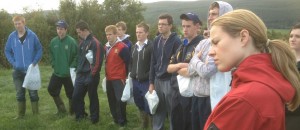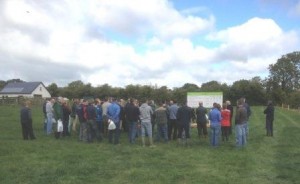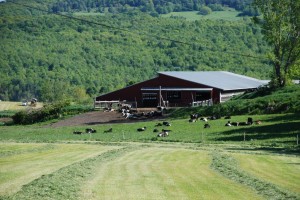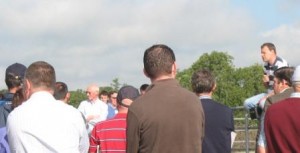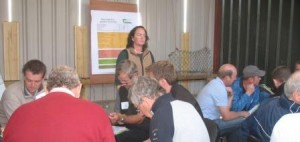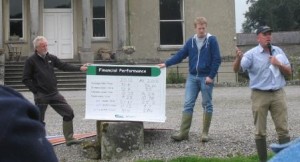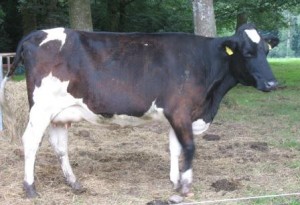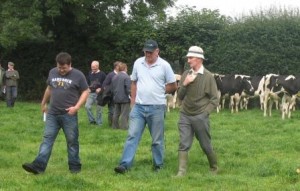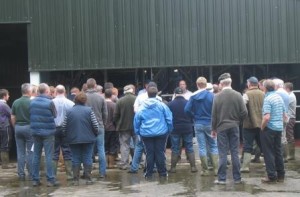Jim and Teresa White know how to raise heifers. They just won the National Heifer Rearing Competitionhere in Ireland. There was a farm walk at their farm in County Tipperary on the 10th of September.
What is unusual about the White’s farm is not that they weigh calves and heifers 4 or 5 times per year. What is unusual is that then they do something about it! They remove the quarter of the animals that are the smallest and put them into their own group. These heifers get special treatment: extra feed and the freshest paddocks.
Jim and his wife have a milking herd of 106 cows, mostly Friesian, with some Jersey crosses. They produce spring milk, so their herd is dried off for about 6 weeks, starting in December. One of their big goals is ‘compact calving.’ They are able to have 78% of their herd freshen within 6 weeks, starting on January 14. In order to do this, they must really concentrate on breeding cows within a short period of time. Cows that do not fit the calendar are culled. (These might be great cows for someone else’s dairy herd). They also select bulls with shorter gestation periods.
Calves get a good start: they are offered 3 quarts of colostrum within the first hour of birth, the first half hour is their goal, and the calves usually drink 2 quarts or a little more. Then Jim and Teresa continue to take top care of them. Calves are weaned when they are double their birth weight. The goal is to have the heifers at 60% of their mature weight by 13-14 months to begin breeding so they freshen at 24 months of age.
The Whites have an interesting system. They are milking 106 cows now. But 139 cows and heifers calved this spring and they had 141 calves born. There were 56 heifers and 58 calves on the farm on the day of the farm walk. All male calves are sold at about 2 weeks of age, and fresh cows that might not quite fit his breeding program or that have some kind of a problem are culled. Their goal is to be milking about 150 in 2015, and then raise just enough calves to keep the herd size stable. They focus on keeping the earliest born calves, with the best genetics, that come from easy-breeding cows for the herd. And because they have a good herd, other dairy farmers are quite interested in buying dairy cattle from this farm.
The Whites attention to detail and is what earned them the Heifer Rearing award. Feeding colostrum, a vaccination plan, weighing heifers to sort and group them, keeping heifers growing, breeding them to freshen at 24 months, and compact breeding and calving were the main points stressed at the farm walk.
The last ‘stand’ at the farm walk was an opportunity to talk about fodder (forage) budgeting with farmers. According to a survey done in early September by Teagasc, about 20% of the farms in Ireland are short of hay or silage. Results further showed the country to be about 8% short. Teagasc advisors are recommending that farmers count and measure their forage supplies. Then calculate how many head are on the farm now, and are likely to be on the farm come spring. Farmers surveyed were counting on 140 day barn-feeding period, which seems like a bit of wishful thinking, as 150 days might be more like it (in Vermont it is more like 200 days). No matter how long the winter might be, the point is to do some figuring now in order to do some buying of feed or selling of animals. There is a good supply of straw from the wheat and barley crops that can be fed with haylage in a ration for tail enders and dry cows, in order to stretch the home-grown forage supply.
